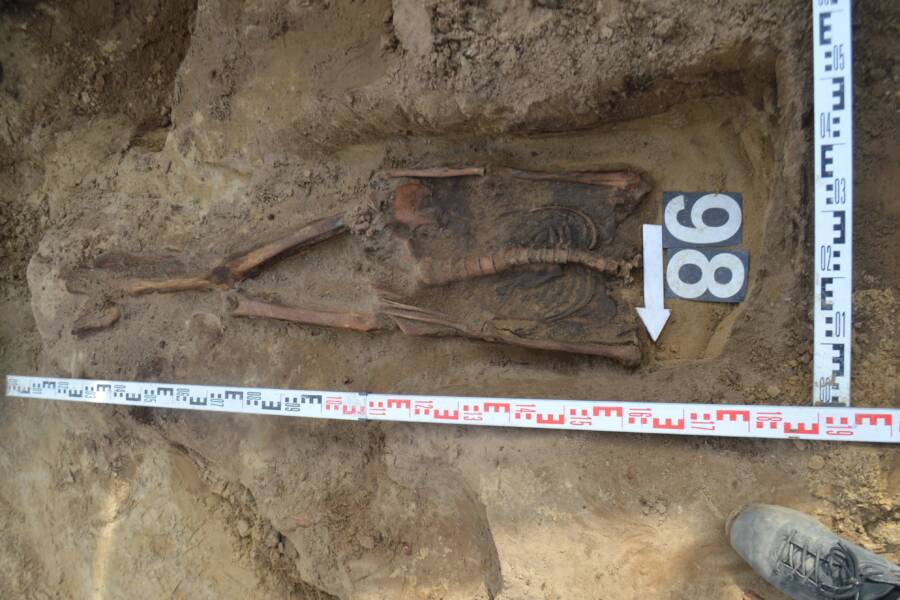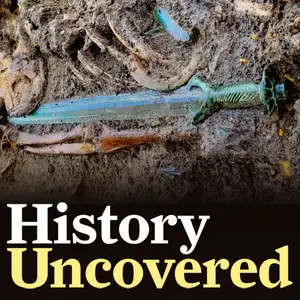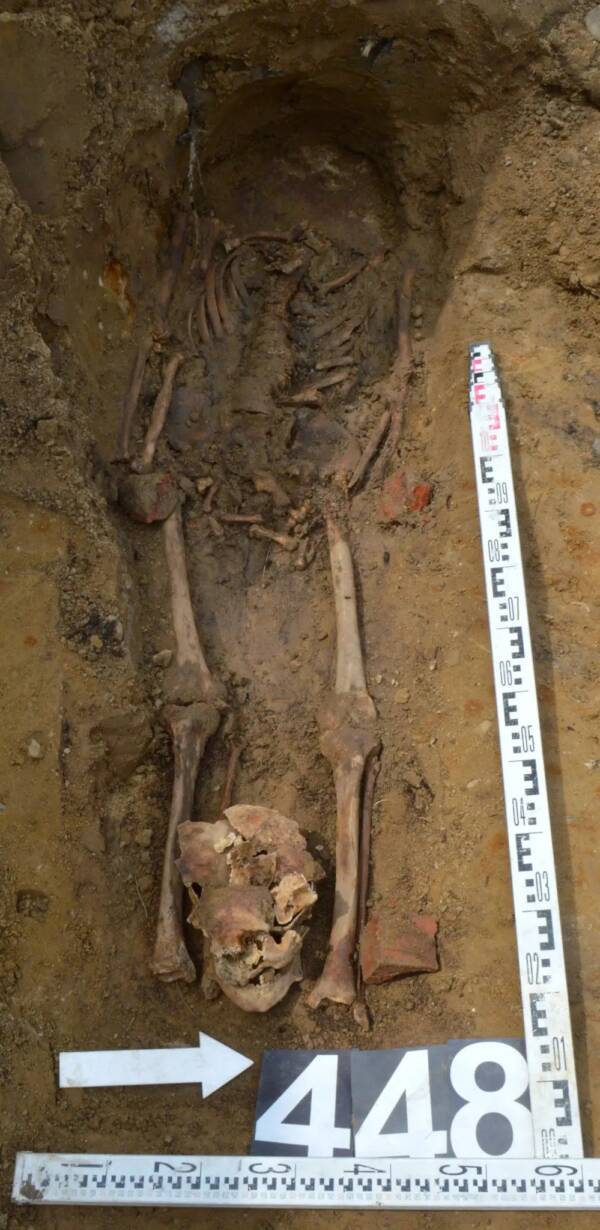Many of the skeletons appear to have been dug up and decapitated — in order to keep these suspected vampires from rising out of the grave.

Maciej StromskiAs evidenced by this Polish burial, people once believed that decapitation could end the “vampire curse.”
While overseeing the expansion of a road in Luzino, Poland, archaeologists came across a mass grave near a church. But this wasn’t just any graveyard. Upon closer examination, the archaeologists found that several of the dead had been treated as “vampires.”
Of the 450 bodies discovered near the church, many had been apparently dug up and reburied. Some had been decapitated and had a skull between their legs, others had coins placed in their mouths, and 20 to 30 percent had bricks arranged alongside their head, arms and legs.
In addition, the archaeologists also found a “huge mass of loose bones deposited in three ossuaries,” according to the Polish site Nadmorski24.pl. Lead archaeologist Maciej Stromski explained that the church near the graveyard was first built in the early 18th century, then expanded after 1945. At some point bones were deposited into the ossuaries.
But the “vampire” skeletons are certainly the most fascinating find.
“We discovered examples of belief in the dead returning from the grave, which could only be stopped by decapitation,” Stromski explained to Nadmorski24.pl. “It was believed that if a member of the deceased’s family was dying shortly after the funeral, he or she could be a vampire. Therefore, after burial, the grave was dug up and the deceased’s head was cut off, which was then placed in the legs.”
One of the skeletons was a woman, who had been decapitated and reburied with “the skull of a child [laid] on her bosom.”

The coins found in certain skeletons’ mouths was meant to seal in their soul and give them passage to the afterlife. According to Poland’s The First News, at least one of the coins dates back to 1846, which makes sense as anti-vampire practices were popular in the 19th century.
Indeed, the “vampire graveyard” full of decapitated skeletons and skeletons with coins in their mouths is part of a larger anti-vampire tradition reflected in Polish “literature, folk tales and earlier archaeological research,” according to Nadmorski24.pl. In fact, the site notes, some of these ancient practices have been preserved in certain regions to this day.

Maciej StromskiMany of the skeletons had been decapitated, some had coins placed in their mouths, and 20 to 30 percent had bricks laid around their head and limbs.
So where did these vampiric customs actually come from? According to Ancient Origins, many cultures conflated people suffering from tuberculosis with vampires. Because the sick were often pale and thin, and coughed up blood, they were thought to have the “vampire’s curse.”
In Poland, however, legends around vampires could be a bit different. Ancient Origins reports that vampires were thought to be more like zombies — corpses that came back to life. Thus, people believed that decapitating skeletons feared to be vampires could prevent them from rising from the dead.

Maciej StromskiIn addition to the skeletons treated as vampires, archaeologists also found a “huge mass of loose bones deposited in three ossuaries” near the 18th-century church.
Vampire legends date back to at least the 11th century. Sometimes the living would decapitate suspected vampires like in the Polish vampire graveyard, but sometimes they’d go a step further. To ensure that the vampire didn’t rise from its grave, they’d hammer a metal rod straight through the deceased’s skull.
Hopefully now the dead of the Polish vampire graveyard — dug up at least twice — will finally be able to rest in peace.
After reading about the “vampire grave” discovered near a church in Poland, discover the eerie story of the vampire skeleton found in Pien, Poland, with a sickle across her throat. Or, learn about the child subjected to a vampire burial in ancient Rome.





